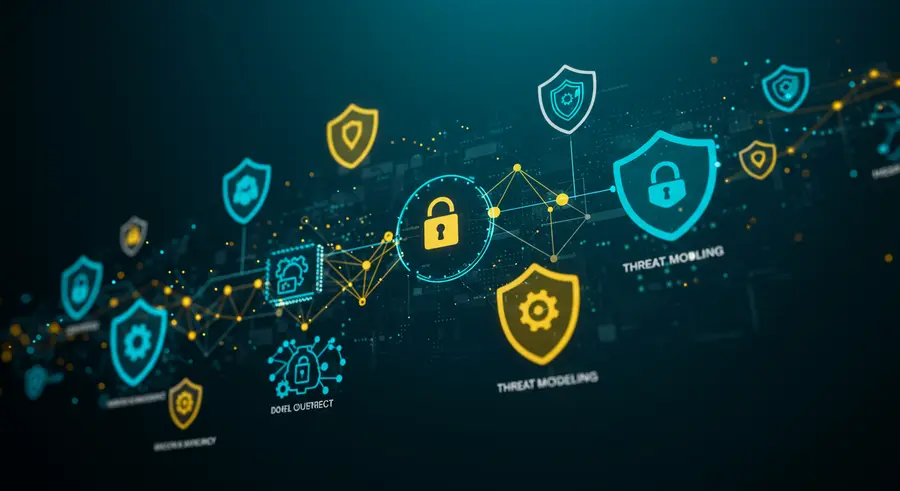Threat Modeling in DevSecOps: Building Security from the Ground Up
In the world of DevSecOps, security isn't an afterthought; it's an intrinsic part of the development process. One of the most powerful and proactive security practices is Threat Modeling. It’s a structured approach that helps identify potential threats and vulnerabilities in an application or system early in the development lifecycle, before any code is even written or deployed.

Proactively identifying threats strengthens your security posture.
What is Threat Modeling?
Threat modeling is essentially a process of identifying, analyzing, and prioritizing potential threats to a system and then determining appropriate mitigations. It involves asking questions like "What are we building?", "What could go wrong?", "What are we going to do about it?", and "Did we do a good job?". By conducting threat modeling, teams can understand the security risks inherent in their design and make informed decisions to address them.
This systematic approach shifts security left, enabling developers, architects, and security professionals to collaborate and integrate security controls from the design phase itself. This not only reduces the cost of fixing vulnerabilities but also enhances the overall security posture of the software.
Why is Threat Modeling Crucial in DevSecOps?
- Early Vulnerability Detection: Identifies design flaws and potential attack vectors before they become exploitable code.
- Cost Reduction: Fixing security issues in the design phase is significantly cheaper than patching them post-deployment.
- Enhanced Collaboration: Fosters a shared understanding of security risks among development, security, and operations teams.
- Proactive Security: Moves away from reactive security measures to a proactive, preventative approach.
- Compliance and Governance: Helps meet regulatory compliance requirements by demonstrating due diligence in security.
For financial analysis and portfolio management, understanding and mitigating risks is paramount. Tools that offer AI-powered market insights can be invaluable in identifying potential economic vulnerabilities and opportunities, similar to how threat modeling identifies security weaknesses.
Common Threat Modeling Frameworks
Several methodologies can be employed for threat modeling, each with its strengths:
- STRIDE: Developed by Microsoft, STRIDE categorizes threats based on six types: Spoofing, Tampering, Repudiation, Information Disclosure, Denial of Service, and Elevation of Privilege. It's a widely used and effective method for identifying common application security threats.
- DREAD: Often used in conjunction with STRIDE, DREAD helps in rating risks based on Damage, Reproducibility, Exploitability, Affected Users, and Discoverability. This allows for prioritization of identified threats.
- PASTA (Process for Attack Simulation and Threat Analysis): A seven-step, risk-centric methodology that guides security teams through the process of analyzing threats, simulating attacks, and assessing the business impact of those attacks.
- LINDDUN: Focuses specifically on privacy threats, helping to identify and mitigate privacy-related risks in software systems.
Key Steps in the Threat Modeling Process
- Define the Scope: Clearly define what system, application, or feature is being analyzed.
- Deconstruct the Application: Understand the architecture, data flows, trust boundaries, and components. Data flow diagrams (DFDs) are very useful here.
- Identify Threats: Using frameworks like STRIDE, brainstorm potential threats to the identified components and data flows.
- Analyze Threats and Vulnerabilities: Assess the likelihood and impact of each identified threat. This might involve using DREAD or other risk ranking methods.
- Determine Mitigations: Propose and design security controls and countermeasures to address the identified threats.
- Validate and Verify: Ensure that the implemented mitigations are effective and that the threat has been adequately addressed. This often involves security testing.
Integrating threat modeling into your CI/CD pipeline ensures that security is continuously evaluated and improved. For a deeper dive into continuous integration, consider resources like Atlassian's Guide to Continuous Integration.
Integrating Threat Modeling into Your DevSecOps Pipeline
For threat modeling to be effective in a DevSecOps environment, it needs to be an ongoing activity, not a one-time event. It should be performed early in the design phase of new features or applications and revisited whenever significant architectural changes occur. Automating parts of the threat modeling process, such as data flow diagram generation or threat identification based on patterns, can further enhance its efficiency and consistency.
Remember, threat modeling is a collaborative effort. It requires input from developers, architects, security engineers, and even product owners to be truly comprehensive and effective.
Conclusion
Threat modeling is a cornerstone of proactive security in the DevSecOps paradigm. By systematically identifying and mitigating threats at the earliest stages, organizations can build more secure applications, reduce remediation costs, and foster a strong security culture. Embracing threat modeling is not just about finding flaws; it's about building resilience and ensuring security by design.